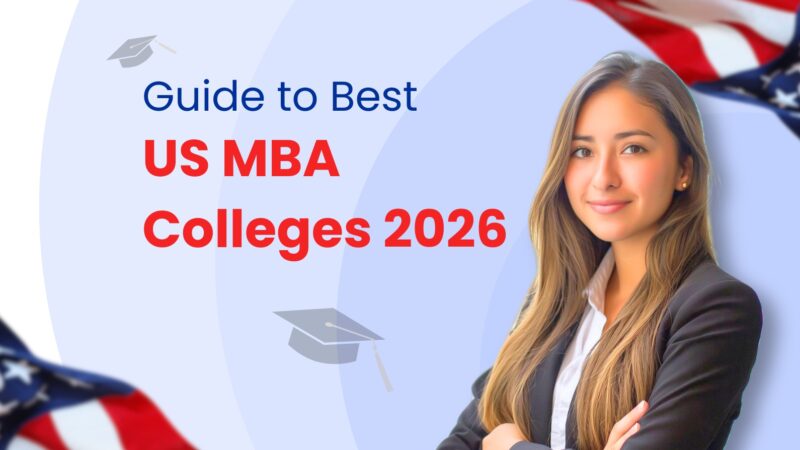
Engineering Education Loans for the USA: Answers to 10 Most Asked Questions
Financing an engineering degree in the U.S. can feel overwhelming. Between tuition, living costs, and incidental expenses, most students turn to loans to fill gaps. Below are the 10 most frequently asked questions on engineering education loans, answered clearly and comprehensively—no fluff, just practical insight on study engineering USA.
10 Most Asked Questions for Engineering Education Loans in the USA
Navigating the world of student loans can be confusing, especially for aspiring engineers headed to the U.S. With rising tuition costs and a maze of financing options, it’s natural to have questions.
Let’s break down the 10 most frequently asked questions about education loans for the best engineering colleges in the USA—covering everything from loan types and interest rates to repayment strategies and lender comparisons—to help you make smarter, more confident financial decisions.
Learn Your Loan Eligibility for the US
1. What kinds of loans are available for engineering students in the USA?
Engineering students can tap into two main categories:
- Federal loans, which include Direct Subsidized and Unsubsidized loans, and Graduate PLUS loans for postgraduate students. They offer fixed rates, flexible repayment options, and potential forgiveness programs.
- Private loans, from lenders like Sallie Mae, Ascent, Citizens, College Ave, etc. These can cover the cost of attendance if federal aid doesn’t suffice.
2. How do federal loans benefit engineering students?
Federal loans tend to be safer and more flexible. Subsidized loans for abroad study in the USA don’t accrue interest while in school (undergrads), and Unsubsidized loans do but are available more broadly. Graduate students can access Graduate PLUS loans, though they carry higher rates and origination fees.
Repayment plans—including income‑driven options—make budgeting easier.
3. What private lenders should engineering students consider?
Several private lenders stand out for engineering applicants:
- Sallie Mae – Offers both undergraduate and graduate loans, no origination fees, autopay discounts, variable or fixed rates.
- Ascent – Known for cosigner‑optional, outcome‑based loans for juniors/seniors; no fees and good autopay discounts.
- Citizens Bank – Long-term (5–15 years), a generous borrowing cap up to $150K, autopay discount.
- College Ave – Flexible repayment terms (5–15 years), up to cost of attendance, autopay benefit.
Credible notes these lenders often top the list for engineering majors due to borrowing limits and rates.
4. How do interest rates and terms compare?
Below is a simplified table (using sample ranges) to illustrate the differences:
| Loan Type / Lender | Interest Rate (APR) | Term (Years) | Highlights |
| Federal Subsidized/Unsubsidized | ~4–7% (fixed) | 10–25 | Flexible terms, forgiveness options |
| Graduate PLUS (federal) | ~6.84% + ~4.3% origination | Varies | For grad students, higher cost |
| Sallie Mae (private) | 2.89% – 17.49% (fixed/var) | 10–20 | No origination fee, autopay discount |
| Ascent (private) | ~2.89%+ / 4.34%+ | 5–20 | No cosigner, outcome‑based options |
| Citizens Bank (private) | ~3.24%+ / 4.99%+ | 5–15 | High loan cap, autopay |
| College Ave (private) | ~2.89%+ / 4.24%+ | 5–15 | Flexible, autopay perks |
Note: These are sample ranges; actual rates depend on credit, program, cosigner, and enrollment level.
5. How should students choose between federal and private loans?
Start with federal study abroad loans USA—they’re simpler, safer, and may offer forgiveness. If federal funds fall short:
Compare private lenders based on rates, terms, autopay discounts, cosigner release policies, and eligibility flexibility. Remember: private loans lack forgiveness and income‑driven plans.
6. Are there alternatives to traditional loans?
Income‑Share Agreements (ISAs): Some schools/programs allow tuition financing in exchange for a fixed salary percentage post-graduation. Less common for engineering but worth exploring at progressive institutions.
7. How do recent legislative changes impact loan options?
New federal proposals (e.g., the “One Big Beautiful Bill Act”) are reshaping aid:
- Caps on Grad PLUS and Parent PLUS ($100K–$200K total, depending on degree type).
- Scrapping certain repayment plans, reducing forgiveness timelines from 20–25 to up to 30 years.
- Federal loan eligibility may become tied to program outcomes—poor-performing engineering programs could lose access.
Bottom line: Proposals are evolving—students should monitor developments and apply early when possible.
8. Is refinancing worth it for engineering graduates?
If you’ve landed a high-paying engineering role, refinancing private or federal loans could lower your rate or consolidate payments. Companies like Earnest and CommonBond offer such options.
Caution: Refinancing federal loans removes access to federal protections and forgiveness.
Get STEM Admission Consultation for US
9. What documentation is needed to apply for loans?
For federal loans: Submit FAFSA, proof of enrollment, identity, and tax info. For private engineering Education Loan USA, lender applications, credit information, cosigner details (if required), proof of enrollment, and cost breakdowns are required.
International students often need a U.S. cosigner; some lenders like MPOWER or Prodigy Finance may allow loans without one.
10. How can engineering students minimize borrowing?
Borrowing as little as possible is smart:
- Apply for engineering-specific scholarships/grants from organizations like ASEE, ASME, SHPE, or defense‑focused fellowships.
- Explore employer tuition assistance or co‑op programs.
- Work part‑time or leverage internships that offer tuition support.
- Research regional/state grants and institutional aid.
Summary
Engineering loans in the U.S. come in three channels:
- Federal Loans—your first and safest bet.
- Private Loans—for top-ups, with lenders like Sallie Mae, Ascent, Citizens, College Ave.
- Innovative Alternatives—like ISAs (less common).
Stay informed about evolving legislation, compare interest rates, prioritize scholarships, and borrow responsibly. Your courses to study in the USA—and future engineering career—are worth smart decisions today.

Frequently Asked Questions
Can international engineering students get federal loans?
No—federal student loans are for U.S. citizens/permanent residents. International students usually need a U.S. cosigner or resort to lenders like MPOWER or Prodigy Finance.
Are outcomes‑based loans from Ascent reliable?
Yes—they’re appealing for juniors/seniors with good GPAs, offering no‑fee, cosigner‑optional terms. But always read the fine print—interest penalties apply if you don’t graduate or repay on time.
Are there loan forgiveness options for engineers?
Yes—federal loans under income‑driven repayment may forgive remaining balance after 20–25 years. Public service forgiveness (PSLF) may apply if you work for qualifying employers.
What’s a cosigner release?
A clause allowing the borrower to remove the cosigner after a set number of on‑time payments (e.g., 12–48 months). Lenders like Sallie Mae, Ascent, EDvestinU offer this.
Is autopay discount always worth it?
Yes—most private lenders (Sallie Mae, Ascent, Citizens, College Ave) offer around 0.25% to 0.50% APR reductions with autopay. Over time, that saves real money.
Thinking About Studying Abroad?
Get Free Consultation for Study Abroad Loan & Admissions.
Related Blogs
Want to connect with
Our Experts?
We provide keep one to one counselling to
Study Abroad Aspirants









